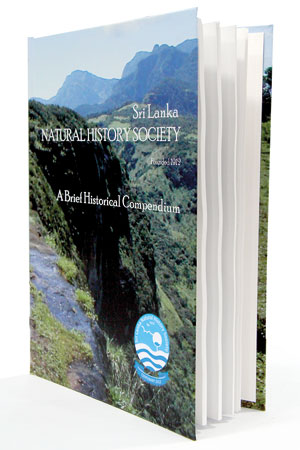More than hundred years ago, Sri Lanka’s Natural History Society took root
 All the facts of natural history taken by themselves have no value, but are barren like a single sex, but marry it to human history, and it is full of life.
All the facts of natural history taken by themselves have no value, but are barren like a single sex, but marry it to human history, and it is full of life.
Emerson Address on ‘Nature’ 1836.
Founded in 1912 at the Colombo Museum (now the National Museum), its first annual meeting in March that year was attended by the then Governor and some of the best naturalists, biologists, scientists of the era.The Society’s membership has altered down the years- from more scientists who were practising entomologists, ornithologists who undertook field studies to the present membership who are those with a general interest in these disciplines. The present committee of the Natural History Society with Dr. Malik Fernando as Patron, comprises Chris Corea as President, Ninel Fernando as Vice President, Asoka Siriwardena as Secretary, Nandalal Ranasinghe as Treasurer, Vasantha Dias, Srilal Motha and NalinWikramanayake.
Many of the early members were self-taught and did not have a professional scientific training either as botanists or zoologists. But this was not unusual for the time. In the past teaching and training in disciplines like botany, geology and zoology appeared to demand a very much wider perspective than is generally accorded. Natural history cannot be rationalised by a simple equation, the very act of observing natural history phenomena has its own aesthetic, and scientific interpretations.
The centennial publication of the Natural History Society, aptly titled, A Brief Historical Compendium; brought out by the committee- was released at this meeting.
With a brief introduction on the biodiversity of Sri Lanka the rest of the text falls roughly into three chronological phases. Also included are some of the society’s activities and select papers published over the years.
The first part is historical and has potted biographical data of some of the leading naturalists, the majority British. Several of them published their own work – an array of books on the wild life and natural history of Sri Lanka. Many of these publications were essentially field guides and handbooks on birds, mammals, insects (butterflies), reptiles (fish and snakes). Many of these guidebooks, because of their overwhelming popularity are still in use and have been reprinted over the years.
The minutes of the hundred or more meetings which took place between 1912-1930 (some of which are reproduced in this compendium) give graphic accounts of meetings, excursions, inaugural presidential addresses and reminiscences offering a clue into how naturalists of former times carried out their work.
The second part largely focuses on the present state of the Natural History Society and its activities in the last quarter century. These are listed in the contents as – Reminiscences of our Patron, Early records and NHS publications, Contemporary Naturalist Members, NHS today. The compendium also includes numerous photographs of field trips and the senior members labouring over mountain tracks.
The NHS’s present role is largely focused on building awareness of Sri Lanka’s diverse natural history and resources through lectures, field visits etc – with a particular emphasis on younger people who will inherit the custody of these resources. Also the promotion of study and research to increase our knowledge of our natural history and natural environment- thus serving as a forum for sharing knowledge in the above areas
Chief Guest and speaker for the evening Dr. Rohan Pethiyagoda in his lecture titled ‘Illustrated History of Biodiversity Exploration in Sri Lanka’ included some rare images of hardly seen title pages of the botanical literature of the 17-19th century that made Sri Lanka’s flora famous the world over. In the 17th century the country’s flora formed an important and central study in many of the European centres of botanical studies such as Amsterdam and Leyden (Holland), Padua (Italy), London (England), and Uppsala (Sweden).
He reminded the audience that this year- 2017 was important in a global sense as it was the tri -centenary of the first major publication devoted solely to the Flora of Sri Lanka published in 1717, titled Museum Zeylanica.
The work was based on the herbarium (dried species of plants compiled into a folio) by Paul Hermann (1646-1695), educated in Jena who graduated as a doctor in Padua, and was appointed the First Physician in the Dutch maritime territories in Sri Lanka by the Dutch East India Company between 1672-79. The work was brought into completion and compiled by Willam Sherard, one of his pupils.
Charting the history of the study of Sri Lankan flora during the Portuguese, Dutch and British period, Pethiyagoda brought the discussion up to the present publication- The Flora of Sri Lanka.
Although sadly the text of this lecture has not been reproduced in the compendium- for anyone who is even marginally interested, this publication gives the reader an insight and broad overview of the natural history and some of the leading figures that made their valuable contribution to documenting the fascinating and varied wildlife of the country.


